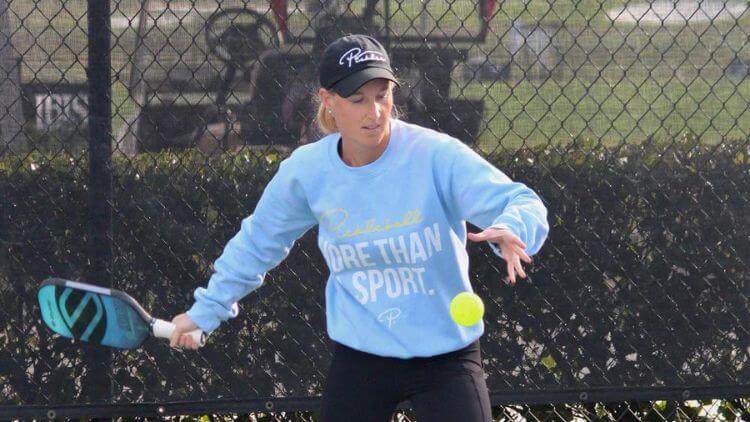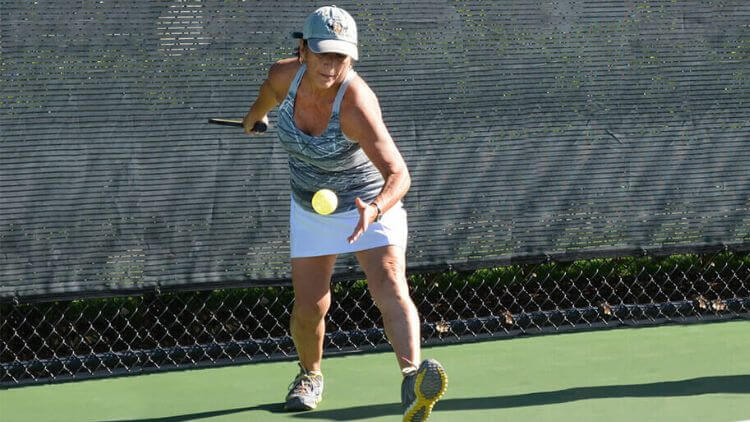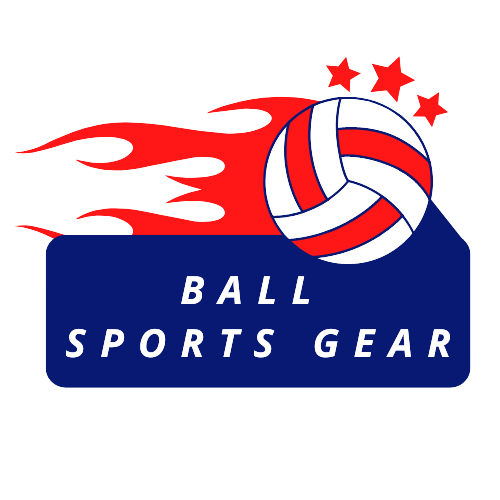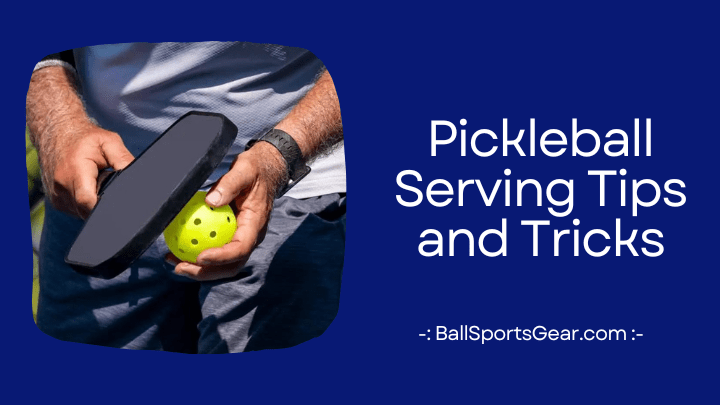Pickleball has become a popular sport for players of all ages and skill levels. One of the most crucial aspects of pickleball is serving. A well-executed serve can put you in control of the game right from the start, giving you an advantage over your opponents. In this article, we will explore a variety of Pickleball Serving Tips, strategies, and techniques to help you enhance your pickleball serving skills.
Know the Tips for Serving in Pickleball
Understand the Rules and Techniques
Before delving into the tips, it’s essential to have a solid understanding of the basic rules and techniques of pickleball serving. Familiarize yourself with the official rules, including the proper service position, paddle contact, and the designated areas of the service box. Understanding these pickleball tips for serving and rules will give you a foundation to build upon as you refine your serving technique.
Develop Consistency
Consistency is key in pickleball serving. Focus on developing a consistent serving motion that allows you to reliably place the ball where you want it. Practice your serve regularly to build muscle memory and improve your accuracy. Start with a slow and controlled serve, gradually increasing your speed and power as you become more comfortable. Remember to maintain a relaxed grip on the paddle to promote fluidity in your motion.
Utilize Spin and Placement
Adding spin and strategically placing your serves can greatly improve your chances of winning points. Experiment with different types of spin, such as topspin, backspin, and side spin, to keep your opponents guessing and off balance. Additionally, aim to place your serves deep in the service box, near the corners, or at the feet of your opponents to make their returns more challenging.
Vary Your Serves
To keep your opponents guessing and prevent them from anticipating your serves, it’s crucial to incorporate variety into your serving game. Mix up your serves by using different spin techniques, speeds, and placements. Employing a combination of hard, soft, and angled serves will help you maintain the element of surprise, making it more difficult for your opponents to anticipate and return your serves effectively.

Watch Your Opponent
Observing your opponent’s positioning and movement before serving can provide valuable insights into their strengths and weaknesses. Pay attention to their court positioning and any patterns they exhibit. Adjust your serving strategy accordingly, targeting their weaknesses and exploiting their vulnerabilities. For instance, if your opponent tends to struggle with low balls, consider using a lower serve to increase the chances of an unforced error.
Maintain a Positive Mental Attitude
Serving in pickleball can be mentally challenging, especially when facing tough opponents or during critical points in a match. Stay focused, maintain a positive mindset, and trust in your abilities. Confidence is key to delivering consistent and effective serves. Visualize successful serves before stepping up to the line, and don’t let mistakes or missed serves affect your composure.
Practice Your Form
The first step to improving your serve is to practice your form. Stand with your feet shoulder-width apart and hold the paddle with a continental grip. This grip is similar to holding a hammer, with the base knuckle of your index finger on the top bevel of the paddle handle.
Next, toss the ball up with your non-dominant hand and swing your paddle arm back. As the ball reaches its peak, swing your paddle arm forward and make contact with the ball. Make sure to follow through with your swing to generate power.
Find Target And Aim
In pickleball, the goal is to serve the ball to the opponent’s side according to the rules. However, this can be challenging for beginners who may struggle to keep the ball in bounds. Even experienced players may have difficulty perfecting their serve.
To improve accuracy, it’s important to select a target for each shot, especially the serve. For example, you might aim at your opponent’s backhand if it’s a weakness. Aiming deep in the service area is also a good strategy. Before serving, take a moment to study the target and visualize the ball heading in that direction. While this technique requires patience and practice, it can greatly improve serve accuracy over time.
Mix Up Your Serves
Another tip for improving your serve is to mix things up. Don’t always serve the ball in the same way – vary your speed, spin, and placement to keep your opponent guessing. Just because the volley serve is underhand, that doesn’t mean there’s just one way to volley serve. There are limitless ways to get creative with it, while still fitting the official criteria for serving.
If you don’t mix up your serves, your opponent will easily be able to see what you’re going to do and either circumvent your next serve or respond to it with a swiftness and accuracy that can catch you off-guard.
Pro Tip: Try learning one of the following serves and add it to your pickleball repertoire.
- Drop Serve: The drop serve gets dogged by traditionalists, but it can be a great way to add some variety to a beginner’s serve. When drop serving, you bounce the ball and then hit it after it bounces, giving you the freedom to backspin or topspin the ball. You also have room for aggression with a drop serve.
- Hook Serve: By introducing some side spin into your serves, à la hook serves, the ball will curve somewhat. If you’re left-handed, expect a right curve, and if you’re right-handed, a left curve.
- Lob Serve: The lob serve also increases the ball’s trajectory, elevating its bounce beyond what you get with a standard pickleball serve.
- Power Serve: To increase your speed when hitting a pickleball, do a driving serve. Go low and hit hard.
Use Spin
Adding spin to your serves can also help you improve. Spin can make it more difficult for your opponent to return the ball and can also help you control the placement of your serves. To add spin to your serves, brush the paddle against the ball as you make contact. The direction in which you brush will determine the type of spin – brushing upwards will create topspin while brushing downwards will create backspin.
Practice
As the saying goes, practice makes man perfect!
To improve your skills, you must do the same. While it may seem like the most skilled pickleball players effortlessly rise to the top, this is far from the truth. What we see is their participation in tournaments and other competitive events. However, behind the scenes, they put in a tremendous amount of effort practicing and training.
Playing pickleball games is an excellent way to practice, but you can make more gradual progress and reduce pressure by practicing on a pickleball court with a friend. Practicing gives you the freedom to run repetitive drills until you learn the correct way to serve or fix an error in your current serve. It also allows you to try out new techniques without the pressure of a game.

Serve Deep
While serving deep may not be the most beginner-friendly strategy, as you progress and enhance your pickleball skills, it’s important to explore different techniques to elevate your game. Serving deep to your opponent’s backhand can be a game-changer. By aiming for the deep areas of the court, you create additional challenges for your opponent. They have to cover more ground to reach the kitchen, and it may limit their ability to return your serve effectively.
Here's a pro-tip: Consider serving deep to your opponent's backhand. In general, most pickleball players have a weaker backhand compared to their forehand. While this may not be true for every player, particularly at the tournament level, it holds for a majority of players.
By focusing on deep serves that target the backhand side, you put pressure on your opponent. Even if they manage to return the ball, their shot is likely to be weaker, giving you an advantage in the ensuing rally. Occasionally, your opponent may recognize their limitations on the backhand side and choose to run around the serve to hit a forehand shot instead. This opens up an opportunity for you to anticipate their movement and respond with a shot that suits your comfort and game plan.
Remember, serving deep requires practice and an understanding of your opponent’s strengths and weaknesses. Experiment with different placements, speeds, and spins to find what works best for you. By incorporating strategic deep serves into your game, you’ll gain an edge over your opponents and enhance your overall performance in pickleball.
Frequently Asked Questions
Maintaining a positive mindset is essential while serving. Visualize successful serves before stepping up to the line, and trusting in your abilities. Don’t let mistakes or missed serves affect your composure. Remember that serving is a skill that can be improved with practice, and a positive attitude will help you stay focused and perform at your best.
Yes, it’s important to familiarize yourself with the official rules of pickleball serving. Understand the proper service position, paddle contact, and the designated areas of the service box. Knowing and following these rules will ensure that your serves are legal and help you avoid any penalties during the game.
To practice serving effectively, set up a target area in the service box and aim for specific spots to improve your accuracy. Incorporate drills that focus on different types of serves, spin techniques, and placements. Additionally, consider practicing with a partner to simulate game-like situations and receive feedback on your serves.
There are various resources available to enhance your pickleball serving skills. Consider watching instructional videos, reading books or articles written by experienced pickleball players, attending clinics or workshops, or even hiring a pickleball coach. These resources can provide valuable insights, tips, and techniques to take your serving game to the next level.
The time it takes to master pickleball serving varies for each individual. It depends on factors such as your current skill level, practice frequency, dedication, and ability to implement the tips and techniques effectively. With consistent practice and a focus on improvement, you can significantly enhance your serving skills over time.
Conclusion
Improving your pickleball serving skills requires practice, dedication, and a willingness to experiment with different techniques. By understanding the pickleball serving tips and rules, focusing on consistency, utilizing spin and placement, varying your serves, observing your opponent, and maintaining a positive mental attitude, you’ll be well on your way to becoming a formidable server in pickleball.
Remember, serving is not only about putting the ball in play but also about gaining an advantage and controlling the tempo of the game. So, get out on the court, implement these tips, and elevate your pickleball serving game to new heights!

